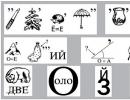Ethyl acetate; acetic ether; ethyl acetate; ethyl acetyl ether. Ethyl acetic acid Ethyl acetate freezing point
Density - 0.902 g/cm³. Melting point -83° C, boiling point 77° C.
Ethyl acetate is produced industrially by distilling a mixture of ethyl alcohol, acetic and sulfuric acids, as well as by treating ethyl alcohol with ketene, or by the Tishchenko reaction from acetaldehyde at 0-5 ° C in the presence of catalytic quantities of aluminum alkoxide.
Chemical formula: C 4 H 8 O 2.
Use of ethyl acetate.
As a solvent, being an active solvent of nitro- and ethylcellulose, it is widely used in the production of paints and varnishes and inks for printing machines. It is also included in the compositions of solvents for nitroglyphthalic, perchlorovinyl and epoxy enamels, various lubricating oils, waxes, polyester varnishes, paints, silicone varnishes and enamels. Up to 30% of all ethyl acetate produced is consumed for these purposes;
As a solvent in the manufacture of adhesive compositions;
At the stage of packaging various goods with flexible packaging materials - as a solvent for films and inks when applying inscriptions and images using a stencil method;
As a reagent and as a reaction medium in the production of pharmaceuticals (methoxazole, hydrocortisone, rifampicin, etc.);
As a degreasing agent in the production of aluminum foil and thin aluminum sheets;
As a cleaning and degreasing agent in the electronics industry;
In the production of film and photographic film, cellophane, various rubber products;
Mixed with alcohol as a solvent in the production of artificial leather;
As an extracting agent for various organic matter from aqueous solutions. Due to its low toxicity, ethyl acetate is used in Food Industry, for example, for extracting caffeine from coffee;
As a gelatinizing agent in production explosives;
As a component (food additive E1504) of fruit essence, which is added to soft drinks, liqueurs and confectionery.
| Indicator name | Standard for brand and variety | ||
| Grade A | Brand B | ||
| Top grade | First grade | ||
| Appearance | Transparent liquid without mechanical impurities | ||
| Color on the platinum-cobalt scale, units. Hazen, no more | 5 | 10 | 10 |
| Density at 20° C, g/cm³ | 0,898-0,900 | 0,897-0,900 | 0,890-0,900 |
| Mass fraction ethyl acetate,% | not less than 99.0 | not less than 98.0 | 91.0±1 |
| Mass fraction of acids in terms of acetic acid, %, no more | 0,004 | 0,008 | 0,010 |
| Mass fraction of non-volatile residue, %, no more | 0,001 | 0,003 | 0,007 |
| Temperature limits for distillation at a pressure of 101.3 kPa (760 mmHg): 95% (by volume) of the product must be distilled within the temperature range, ° C |
75-78 |
74-79 |
70-80 |
| Mass fraction of water, %, no more | 0,1 | 0,2 | 1,0 |
| Mass fraction of aldehydes in terms of acetaldehyde, %, no more | 0,05 | not standardized | - |
| Relative volatility (based on ethyl ether) | 2-3 | 2-3 | 2-3 |
Safety requirements.
In terms of the degree of impact on the human body, technical ethyl acetate is classified as a low-hazard substance (hazard class 4). Ethyl acetate vapors irritate the mucous membranes of the eyes and respiratory tract. When applied to the skin it causes dermatitis and eczema. The maximum permissible concentration in the air of the working area is 200 mg/m⊃3.
Technical ethyl acetate is a flammable liquid and, when mixed with air, forms an explosive mixture of category PA, group T2 according to GOST 12.1.011.
Packaging, transportation and storage.
Technical ethyl acetate is poured into galvanized steel barrels, aluminum barrels, railway and automobile tanks.
Transportation is carried out in barrels by rail or road transport in covered vehicles, railway tanks, tank trucks in compliance with the rules for the transportation of dangerous goods in force for this type of transport.
Technical ethyl acetate is stored in warehouses or in specially equipped metal containers in compliance with the rules for storing flammable substances.
Guaranteed shelf life is six months from the date of manufacture.
LLC Plasma Company® supplies chemical products from a warehouse in Kharkov on time and at affordable prices, on terms favorable to you.
is an ethyl ester of ethanoic acid in the form of a flammable, colorless, volatile liquid substance with a pungent odor of fruit. There are no mechanical impurities. It is a moderately polar solvent product with the properties of esters. Can be dissolved in methyl carbinol, ethyl ether, benzene, methyl trichloride, methylbenzene and some other organic solvents. As for water, the dissolution in it is weaker. It itself has a dissolving effect on cellulose ethers, oil-based resin varnishes, fats and waxes.
Molar mass – 88.11 g/mol, density – 0.902 g/cm³. Thermal properties: melting temperature – -83 °C, boiling temperature – 77 °C. Formula: C 4 H 8 O 2.
Receipt in industry scale occurs during the reaction of ethanol and acetic acid. It is also possible to treat ethanol with carbomethylene or synthesize it from acetaldehyde in the presence of an aluminum alkoxide catalyst.
Applications of ethyl acetate
The main role of this substance is dissolving (this takes up a third of all ethanoic acid ethyl ester produced). It is preferred among other solvents due to its low price, low toxicity and quite tolerable odor. It is used to dissolve nitro- and cellulose acetate, waxes and fats, nitroglyphthalic, perchlorovinyl, epoxy, polyester, silicone varnishes, paints, enamels, and also clean printed circuit boards. Thus, it is used in the production of LC materials, adhesive compositions and inks for printing equipment. When packaging goods using all kinds of flexible packaging materials, it is taken for dissolution during the stencil application of inscriptions and drawings. Together with alcohol, ethyl acetate as a solvent is used, among other things, in the manufacture of artificial leather.
It is also the most popular pesticide. It is part of entomological stains (the task is to kill insects). Compared to the same chloroform, which is used for a similar purpose, ethyl acetate softens the object of influence more and makes it more pliable in preparation.
This substance is used due to its low toxicity and as a component of fruit essences. This is a well-known food additive E1504. It is added to cooling drinks, liqueurs and various confectionery products. It is used to extract caffeine from coffee.
In laboratory practice, it is used in extraction to pull out the organ. substances from aqueous solutions and chromatography (column and thin layer). Sometimes acts as a solvent in some chemicals. reactions. The rarity of such use is explained by the tendency to solvolysis with water and transesterification.
Pharmacists use it as a reaction medium for the manufacture of a number of drugs: methoxazole, hydrocortisone, rifampicin, etc.
Ethyl acetate is a participant in the synthesis of acetoacetic acid ethyl ester.
When creating explosives, it acts as a gelatinizer. In the electronics industry, when creating aluminum foil and thin sheets of aluminum - as a cleaner and disinfectant. It is also used in the creation of photographs, films, cellophane, and all kinds of technical materials. rubber products .
Ethyl acetate in industry
Ethyl acetate, or ethanoic acid ester, is widely used in various industries. industries, performing a large list of tasks:
– in paint and varnish, glue, pulp production and the production of artificial leather, ink for typewriters acts as a solvent. The solvent also acts when applying ink drawings and inscriptions to packaging materials;
– in the pharmaceutical industry it serves as a reagent and reaction medium in the manufacture of drugs;
– in the creation of aluminum foil and thin sheets of aluminum – with a degreaser;
– in the electronics industry it is also used for degreasing and also for cleaning;
– in the food industry it is a popular extractant (for example, it helps extract caffeine from coffee). In addition, it is used in the creation of cooling drinks, liqueurs, confectionery and fruit essences;
– in the production of explosives – gelatinizer;
– in the cosmetics industry it is introduced into manicure products, in particular for removing varnish from nails.
This breadth of application is due to the relative low cost, low toxicity and efficiency in each of the above processes.
Thanks to high efficiency and functionalism, taking into account its low toxicity, ethyl acetate has received such widespread use.
Ethyl acetate is a flammable, colorless liquid with a pleasant odor. The product is an ester of acetic acid and has all the chemical properties characteristic of this group of compounds.
Specifications
Parameters of ethyl acetate according to GOST 8981-78.
|
Index |
|||
|
Top grade |
First grade |
||
|
Appearance |
Transparent liquid without mechanical impurities |
||
|
Density of ethyl acetate, g/cm3 |
|||
|
Chromaticity, Hazen units |
|||
|
Mass fraction of acids in terms of acetic acid, % |
|||
|
Mass fraction of the main substance, % |
|||
|
Mass fraction of non-volatile residue, % |
|||
|
Mass fraction of water, % |
|||
|
Mass fraction of aldehydes in terms of acetic acid, % |
Not marked |
||
Physical properties
Ethyl acetate is miscible in any proportion with toluene, benzene, chloroform, ethanol and other organic solvents. The substance is moderately polar. Limited soluble in water. Water dissolves in ethyl acetate up to 9.7% wt. The main component of the product composition quickly hydrolyzes in an alkaline environment to acetic acid and ethanol. The formation of azeotropic mixtures of solvent with ethanol, isopropyl alcohol, carbon tetrachloride, and cyclohexane is possible. Ethyl acetate has low toxicity. Vapors in high concentrations cause irritation of mucous membranes. If the substance comes into contact with the skin, dermatitis may develop, so gloves must be used when using ethyl acetate.
Application
Ethyl acetate can be used as a solvent for resin oil paints, waxes, fats, and cellulose ethers. The substance can also be used in the following cases.
- Dissolution of film-forming substances, pigments in the production of varnishes and paints, inks for printing machines.
- Production of multicomponent adhesives.
- Dissolution of ink when applying images and inscriptions using a stencil method on packaging materials.
- Creation of a reaction environment in the production of drugs.
- Cleaning and degreasing of surfaces in the electronics industry.
- Extraction of organic components from aqueous solutions (for example, caffeine from coffee).
- Gelatinization of explosives.
- Production of fruit essences, etc.
Get more information about chemical properties ethyl acetate, you can contact the specialists of the BINAGroup company about the terms of wholesale deliveries to different cities of Russia. To do this, call any of the branches listed in the “Contacts” section.
It is highly soluble in alcohol, chloroform and ether, less soluble in water, burns well, and has a maximum explosive concentration in air of 2.2 - 9%. This is a solvent that has low cost, low toxicity, and has an acceptable odor.
Ethyl acetate is obtained from:
Acetylation of ethyl alcohol with acetyl chloride or acetic anhydride. (Laboratory method)
. distillation of a mixture of ethyl alcohol, acetic and sulfuric acids. (Industrial method).
. treatment of ethyl alcohol with ketene. (Industrial method).
. according to the Tishchenko reaction from acetaldehyde at 0-5 °C in the presence of catalytic quantities of aluminum alkoxide. (Industrial method)
Technical characteristics of ethyl acetate .
The name of indicators | Norm |
| Appearance of ethyl acetate | colorless, transparent liquid, free of mechanical impurities |
| Density of ethyl acetate at 20 °C, g/cm*3 | 0,898-0,900 |
| Hasen unit chromaticity | 5 |
| Mass fraction of the main substance, %, not less | 99,0 |
| Mass fraction of acetic acid, %, no more | 0,004 |
| Mass fraction of non-volatile residue, %, no more | 0,001 |
| Temperature limits for the distillation of ethyl acetate at a pressure of 760 mm. rt. Art., °С | 75-78 |
| Mass fraction of water, %, no more | 0,1 |
| Relative volatility (based on ethyl ether) | 2-3 |
| Mass fraction of ethyl alcohol | absent |
Characteristics of ethyl acetate by brands and varieties.
| Indicator name | Ethyl acetate | ||
| A | B | ||
| premium | 1st grade | ||
| Appearance | Transparent liquid without mechanical impurities | ||
| Color, Halen units, max. | 5 | 10 | 10 |
| Density at 20 0C, g/cm3 | 0,898-0,900 | 0,897-0,900 | 0,890-0,900 |
| Mass fraction of the main substance, % | at least 99 | at least 98 | 91±1 |
| Mass fraction of acids in terms ofacetic acid,%, no more | 0,004 | 0,008 | 0,01 |
| Mass fraction of non-volatile residue, %, no more | 0,001 | 0,003 | 0,007 |
| Distillation temperature limits atpressure 101.3 kPa 93% (by volume)the product must be distilled withintemperature, 0С | 75-78 | 74-79 | 70-80 |
| Mass fraction of water, % no more | 0,1 | 0,2 | 1 |
| Mass fraction of aldehydes inrecalculation onacetaldehyde, % no more | 0,05 | not marked | - |
Ethyl acetate is used in the following industries:
As a solvent in the production of paints and varnishes and inks for printing machines;
. as a solvent in the manufacture of adhesive compositions;
. at the stage of packaging various goods with flexible packaging materials - as an ink solvent when applying inscriptions and images using a stencil method;
. as a reagent and as a reaction medium in the production of pharmaceuticals (methoxazole, rifampicin, etc.);
. as a degreasing agent in the production of aluminum foil and thin aluminum sheets;
. as a cleaning and degreasing agent in the electronics industry;
. as a solvent for cellulose ethers;
. mixed with alcohol as a solvent in the production of artificial leather;
. as an extracting agent for various organic substances from aqueous solutions. Due to its low toxicity, ethyl acetate is used in the food industry, for example, to extract caffeine from coffee.
. as a gelatinizing agent in the manufacture of explosives;
. as a component of fruit essences;






